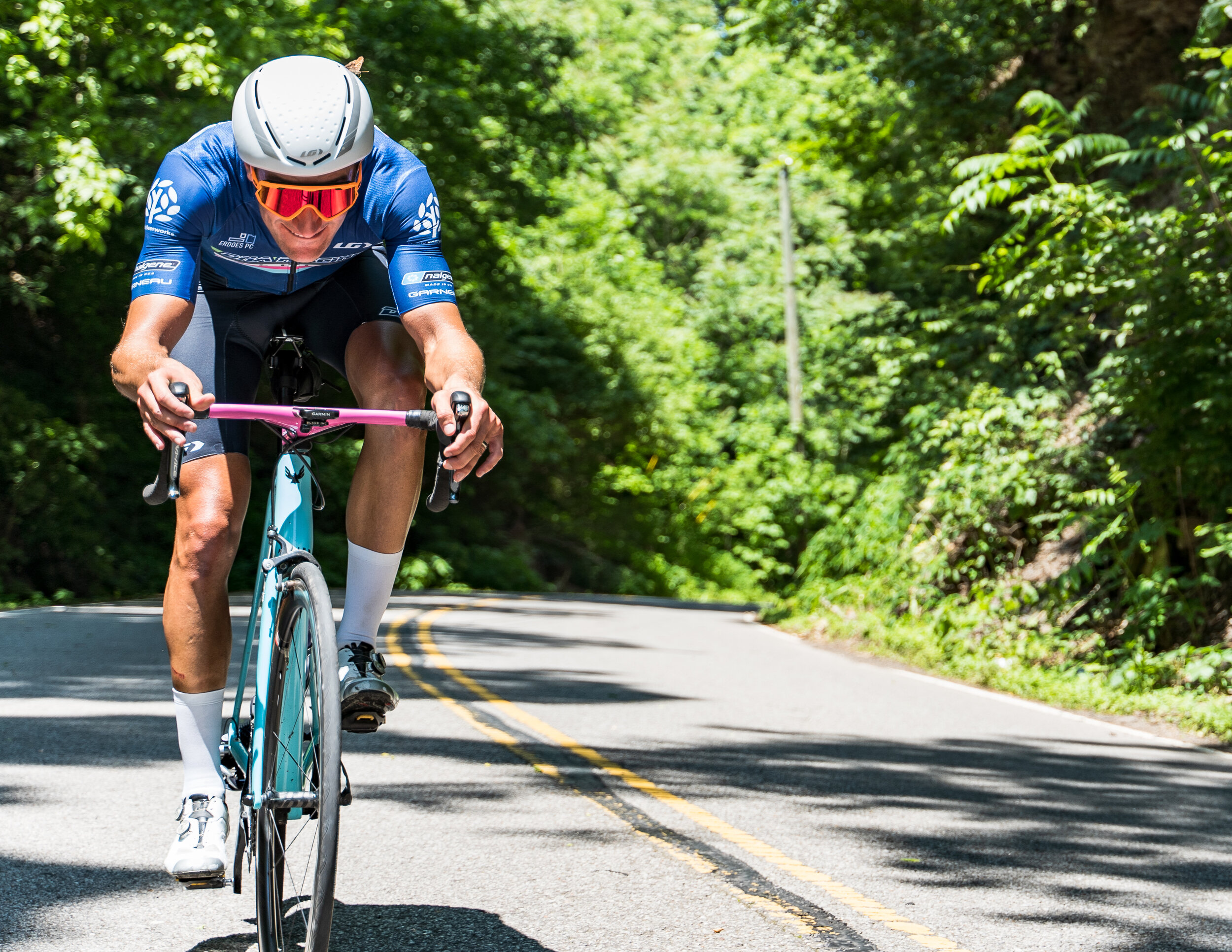Cycling Training Guide - Cutting-Edge Tips
Transform your cycling with our comprehensive cycling training guide. From beginners to pros, we've got you covered!
Author:Daniel JamesReviewer:Karan EmeryFeb 16, 20241.4K Shares85.4K Views

Starting on a cycling training journey requires dedication, strategy, and a solid understanding of key principles. Whether you're aiming to improve endurance, speed, or overall performance, having a structured cycling training guideis essential.
It might be difficult to train without a coach, particularly if you're a novice rider and unsure of where to begin. It can be difficult to determine what measures will help you reach your goals, even if you've been cycling for some time and want to improve your skills.
Hence, online training plans are a fantastic resource if hiring a cycling coach is out of your price range or you'd prefer to train on your own, as long as you pick the best one for your needs, riding style, and riding objectives.
This comprehensive cycling training guide provides practical advice and tips for cyclists of all levels, focusing on building a strong foundation, setting realistic goals, and maximizing training efficiency.
Understanding Cycling Training
Cycling training involves a combination of endurance, interval, and strength workouts tailored to individual goals and fitness levels. Endurance rides focus on building aerobic capacity and stamina, while interval training improves speed, power, and anaerobic threshold. Strength workouts target muscular endurance and power output, essential for climbing and sprinting.
Building A Training Plan
A well-designed training plan consists of a variety of workouts strategically distributed throughout the week. Begin by assessing your current fitness level and setting specific, measurable goals. Divide your training into phases, such as base, build, peak, and recovery, to progressively increase intensity and volume while allowing for adequate rest and adaptation.
Key Training Principles
- Progressive Overload - Gradually increase the intensity, duration, or frequency of your workouts to stimulate adaptation and improvement.
- Specificity - Tailor your training to match the demands of your cycling discipline, whether it's road racing, mountain biking, or endurance cycling.
- Rest and Recovery - Allow sufficient time for rest and recovery between workouts to prevent overtraining and promote adaptation.
- Consistency - Regular, consistent training is essential for long-term improvement and performance gains.
- Variety -Incorporate a mix of workouts, including endurance rides, intervals, hills, and strength training, to target different energy systems and prevent boredom.
Types Of Cycling Workouts
- Endurance Rides -Long, steady-paced rides at a moderate intensity to build aerobic capacity and endurance.
- Interval Training - Alternating periods of high-intensity efforts (e.g., sprints) with periods of recovery to improve speed, power, and anaerobic threshold.
- Hill Repeats - Repeated efforts of climbing hills to build strength, power, and mental toughness.
- Tempo Rides - Sustained efforts at a moderately high intensity to improve lactate threshold and sustainable pace.
- Strength Trainin -Off-the-bike exercises targeting key muscle groups to improve muscular endurance, power, and stability.
Nutrition And Hydration
Proper nutrition and hydration are critical components of effective cycling training. Fuel your body with a balanced diet rich in carbohydrates, protein, and healthy fats to support energy production, recovery, and muscle repair. Stay hydrated before, during, and after rides, especially in hot or humid conditions, to maintain performance and prevent dehydration.
Monitoring Progress
Track your progress and performance by keeping a training log, recording key metrics such as distance, duration, intensity, and perceived exertion. Use tools like heart rate monitors, GPS devices, or power meters to gather data and analyze your workouts. Regularly assess your fitness level, adjust your training plan accordingly, and celebrate achievements along the way.
Injury Prevention
Preventing injuries is essential for maintaining consistency and long-term progress in cycling training. Incorporate proper warm-up and cool-down routines before and after rides to prepare your muscles and joints and reduce the risk of injury. Listen to your body and avoid overtraining or pushing through pain. Include cross-training activities like stretching, yoga, and strength training to improve flexibility, balance, and muscular imbalances.
Beginner's Guide To Cycling Training
When you are first beginning to cycle, it is recommended to take it slow. With ease, you may progress from beginner to intermediate with a good 8-week plan (you can find many online), which ends with a 10-mile ride. To prevent scheduling conflicts, you will cycle three days a week, with your longest ride being on a Saturday or Sunday (assuming you work weekends, of course).
Decide in advance which days work best for you to cycle (ideally, one of the days will be a weekend day), and you will alternate between those days. On Tuesdays, Thursdays, and Sundays, we advise. If you think you can elaborate on the times, go ahead. This program is designed for total novices. Feel free to extend your cycling distance; just remember to maintain the plan's relative timings.
Since the first two weeks are dedicated to acclimating to cycling, begin with a couple of 10-minute rides on your first two outings and culminate with a 20-minute ride on the weekend.
Repetition of Week 1.
- Your first two allotted cycle days should consist of 15 to 20 minutes of cycling. On weekends, go for a 30-minute bike ride.
- We're going to eliminate one day this week and extend the cycle on the other two. On Wednesdays, it is advised to ride for 25 minutes, and on weekends, for 35 minutes.
- Once more, three times a week. On the first two days, cycle for thirty minutes, then on the weekend, ride for forty-five minutes.
Go back to Week 5.
- On the first day, bike for thirty minutes; on the second, cut it down to twenty minutes; and on the weekend, complete a sixty-minute cycle to wrap up the week.
- You're going to add one extra bike day during the last week. On the first day, ride for forty-five minutes. On your second day, cycle for an hour, and then the very next day (Friday, if you're utilizing our suggested dates), bike for 20 minutes. Ride ten miles for the final cycle of the plan.
There you have it, then. In just eight weeks, with this approach, you'll go from being a complete novice to easily finishing a 10-mile bike ride. It is up to you which path you take.
Cycling Training Guide - FAQs
How Do I Start Training For Cycling?
Since the first two weeks are dedicated to acclimating to cycling, begin with a couple of 10-minute rides on your first two outings and culminate with a 20-minute ride on the weekend. Repetition of Week 1. Your first two allotted cycle days should consist of 15 to 20 minutes of cycling. On weekends, go for a 30-minute bike ride.
How Do You Structure A Cycling Training Plan?
- Determine Your Racing Objectives and Create a List.
- Make a Calendar for the Year with Training Phases.
- Base Phase: Half a year before to your "A" race.
- Build Phase: Twelve to sixteen weeks prior to your "A" race.
- Peak Period: Six to Eight Weeks Prior to Your "A" Race.
- Speak with a Coach for Expert Advice.
How To Get Fit In 4 Weeks Cycling?
The weekly schedule consists of two strength-training sessions, two cycling sessions, and two rest days with optional (but recommended) recovery activities like dynamic stretching and yoga. One lengthy endurance ride, one threshold session, and one anaerobic power interval training will make up your bike workout regimen.
What Types Of Workouts Should Be Included In A Cycling Training Plan?
Endurance rides, interval training, hill repeats, tempo rides, and strength training are all important components of a well-rounded cycling training plan.
How Can I Monitor My Progress In Cycling Training?
Keep a training log, record key metrics like distance and intensity, and use tools like heart rate monitors or power meters to track progress and performance over time.
How Do I Prevent Overtraining In Cycling?
Avoid overtraining by incorporating rest and recovery days into your training plan, listening to your body, and adjusting intensity and volume as needed.
Conclusion
Effective cycling training requires careful planning, consistency, and attention to key principles such as progressive overload, specificity, rest, and recovery as mentioned in this cycling training guide. By building a structured training plan, incorporating a variety of workouts, fueling your body with proper nutrition and hydration, monitoring progress, and prioritizing injury prevention, you can maximize your performance and achieve your cycling goals. Remember to enjoy the process, stay motivated, and celebrate your progress along the way.

Daniel James
Author
Daniel James is a distinguished gerontologist, author, and professional coach known for his expertise in health and aging.
With degrees from Georgia Tech and UCLA, including a diploma in gerontology from the University of Boston, Daniel brings over 15 years of experience to his work.
His credentials also include a Professional Coaching Certification, enhancing his credibility in personal development and well-being.
In his free time, Daniel is an avid runner and tennis player, passionate about fitness, wellness, and staying active.
His commitment to improving lives through health education and coaching reflects his passion and dedication in both professional and personal endeavors.

Karan Emery
Reviewer
Karan Emery, an accomplished researcher and leader in health sciences, biotechnology, and pharmaceuticals, brings over two decades of experience to the table. Holding a Ph.D. in Pharmaceutical Sciences from Stanford University, Karan's credentials underscore her authority in the field.
With a track record of groundbreaking research and numerous peer-reviewed publications in prestigious journals, Karan's expertise is widely recognized in the scientific community.
Her writing style is characterized by its clarity and meticulous attention to detail, making complex scientific concepts accessible to a broad audience. Apart from her professional endeavors, Karan enjoys cooking, learning about different cultures and languages, watching documentaries, and visiting historical landmarks.
Committed to advancing knowledge and improving health outcomes, Karan Emery continues to make significant contributions to the fields of health, biotechnology, and pharmaceuticals.
Latest Articles
Popular Articles

